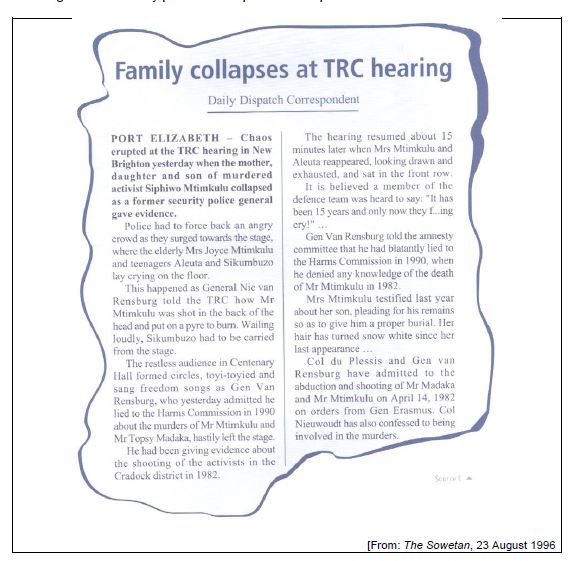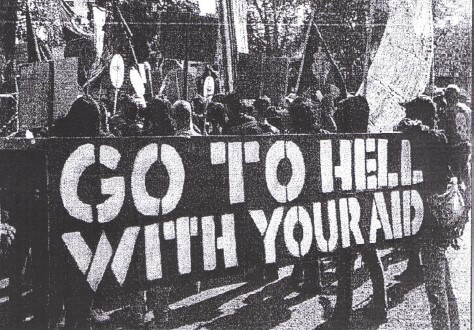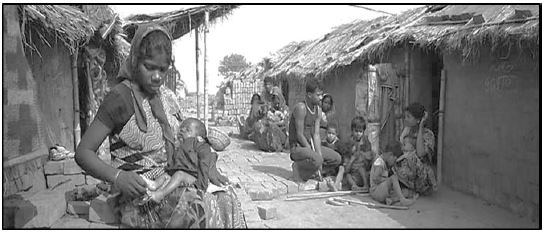HISTORY PAPER 2 GRADE 12 ADDENDUM - NSC PAST PAPERS AND MEMOS SEPTEMBER 2016
Share via Whatsapp Join our WhatsApp Group Join our Telegram GroupHISTORY
PAPER TWO (P2)
GRADE 12
NSC PAST PAPERS AND MEMOS
SEPTEMBER 2016
ADDENDUM
QUESTION 1: WHAT IMPACT DID THE PHILOSOPHY OF BLACK CONSCIOUSNESS (BC) HAVE ON SOUTH AFRICAN STUDENTS IN THE 1970s?
SOURCE 1A
This extract focuses on the influence that the philosophy of Black Consciousness have on the Soweto Uprising of 1976. It was written in 1978 by John Kane-Berman, who was a member of the SRC at the University of the Witwatersrand.
One of the principal factors explaining the new mood of assertiveness (self-confidence) so evident among black youth in many parts of the country is the growth of the Black Consciousness philosophy. This is one of the most important developments in South Africa in recent years… At about the same time, black students, after much soul searching, broke away from the multi-racial but white-dominated National Union of South African Students (NUSAS) to form the South African Students’ Organisation (SASO). After that, numerous organisations espousing (standing for) Black Consciousness were formed, including the South African Students’ Movement (SASM) among schoolchildren and the Black People’s Convention (BPC), a political organisation, of which Steve Biko was honorary president at the time of his death ... [From: SOWETO Black Revolt, White Reaction by J Kane-Berman] |
SOURCE 1B
The following is an extract of Steve Biko’s comments on the role the philosophy of Black Consciousness played in the Soweto uprising.
Where is the evidence of support among the younger generation for Black Consciousness? In one word: Soweto! The boldness, dedication, sense of purpose, and clarity of analysis of the situation – all of these things are definitely a result of Black Consciousness ideas among the young generation in Soweto and elsewhere. But this cannot be measured. For the power of a movement lies in the fact that it can indeed change the habits of people. This change is not the result of force but of dedication, of moral persuasion. This is what has got through to the young people. They realise we are not dealing with mere bread-and-butter issues. [From: Steve Biko Speaks for Himself in News and Letters, November 1977] |
SOURCE 1C
This photograph shows students marching in Soweto on 16 June 1976.
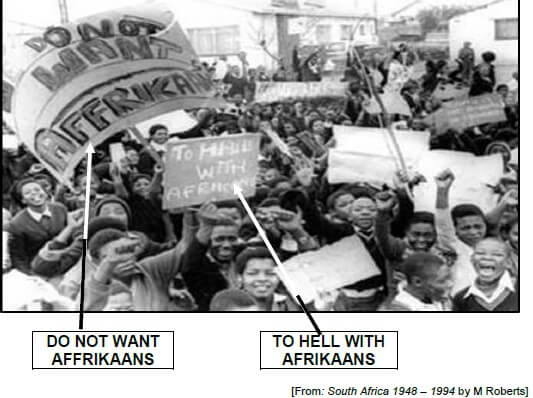 |
SOURCE 1D
This is an excerpt from an address by President Nelson Mandela at the commemoration of the twentieth anniversary of Steve Biko’s death in East London on 12 September 1997.
We are gathered here to pay homage to one of the greatest sons of our nation, Stephen Bantu Biko. His hope in life, and his life of hope, are captured by his resounding words, ‘In time, we shall be in a position to bestow on South Africa the greatest possible gift – a more humane face.’ [From: www.anc.org.za/show.phd?id=3148. Accessed on 25 April 2016.] |
QUESTION 2: HOW DID THE TRUTH AND RECONCILIATION COMMISSION (TRC) DEAL WITH THE PAST?
SOURCE 2A
This source is taken from an address by the former President of South Africa, Thabo Mbeki. It was held on the 10th Anniversary of the TRC at Freedom Park, Tshwane.
In our country, this difficult task, to reconcile discordant elements and make them cling together in our society, fall on the shoulders of the TRC.
[From: www.dfa.gov.za/docs/speeches/2005/mbeki1216.htm. Accessed on 27 April 2016.] |
SOURCE 2B
This photograph depicts Joyce Mtimkulu, the mother of Siphiwo Mtimkulu. She kept a piece of Siphiwo’s hair for more than 20 years.
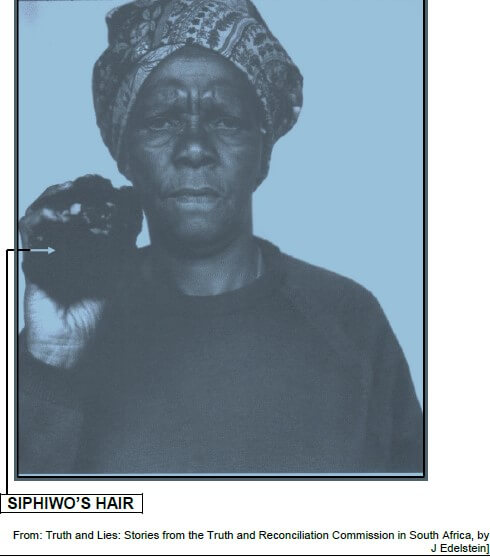 |
SOURCE 2C
The following is an extract from a newspaper article from the Daily Despatch (a newspaper in the East Cape known for its anti-apartheid views). It was written at the time of amnesty hearings of the security policemen implicated in Siphiwo’s murder.
|
SOURCE 2D
In Graeme Simpson’s article, Tell No Lies, Claim No Easy Victories: A brief evaluation of South Africa’s Truth and Reconciliation Commission, he speaks about two people who testified before the TRC.
Mrs Mlangeni – the mother of the Bheki Mlangeni [From: http://www.csvr.org.za/wits/articles/artcyal.htm. Accessed on 27 April 2016.] |
QUESTION 3: WHAT WAS THE IMPACT OF GLOBALISATION ON THE LIVES OF ORDINARY PEOPLE IN THE NEW WORLD ORDER?
SOURCE 3A
This source explains the benefits of globalisation through trade which was a way for countries to exchange goods and resources.
Globalisation can benefit all countries, rich or poor, if that country is willing to be open to international trade. Not only do they have to be open to the world market, but they would have to do it in such a strategic way based on how their country is run in order to gain from trade. Practising globalisation the exact same way, by a set of regulations may lead to a country’s economic downfall. By choosing the best way to engage in international trade, a country can successfully grow economically as well as socially. By using a country’s comparative advantage, or what they can produce at a lower opportunity cost than other countries, they can get all the benefits of trade. If every country has a comparative advantage that means that everyone can gain from trade. There is remarkable evidence that globalisation is helping countries expand and achieve higher incomes or a higher GDP. Research was conducted on national incomes around the world during the 1990s and results showed that the income of rich globalised countries increased by 2% each year. The results also show that poor, more globalised countries have a higher increase in income per year than poor, less globalised countries. Actually according to this research the poor, more globalised countries had an increase in income of 5% each year while the poor, less globalised countries had a decrease of 1% per year. On the other hand, it is suggested that there is a big gap between the rich and the poor. In 1960 the average income of the richest 20 countries was 15 times higher than the poorest 20 countries. Today the income of the richest 20 countries is 30 times higher. [From: http://www.edu-mthong/benefits of globalisation.htm#. Accessed on 27 April 2016.] |
SOURCE 3B
This photograph shows a demonstration held in November 2006 against the IMF and the World Bank.
From: http://1123.photobucket.com/albums/o319/vegan0wer/S2010133.ipg&ipg&imgrefurl=http:news.inf oshop.org/article.php. |
SOURCE 3C
The source outlines the impact of globalisation of countries around the world. It explains the relationship between the IMF, World Bank and the WTO, and how they affect the economies of the countries around the world.
The IMF, World Bank, and WTO work together in an iron triangle to carry out the corporate plan of privatisation, deregulation (removal of control), and ‘free’ trade. Although the World Bank and IMF were originally founded to be part of the United Nations, they have always been controlled by bankers and economists from the United States and Europe. [From: History for all, Grade 12, by E Brink, M Malinga et al] |
SOURCE 3D
This source highlights the living conditions in Mumbai, India. It was published in July, 2011.
[From: www.poverties.org/poverty-in India.html. Accessed on 27 April 2016] |
ACKOWLEDGEMENTS
- Brink, E et al 2012 Solutions for all History Grade 12 Macmillan SA
- Daily Dispatch 25 September 1995
- Dlamini N et al 2007 Shuter’s History. Shuter & Shooter Publishers LTD
- Edelstein, J 2005 Truth and Lies: Stories from the Truth and Reconciliation Commission in South Africa
- http://1123.photobucket.com/albums/o319/vegan0wer/S2010133.ipg&ipg&imgrefurl
- http://www.csvr.org.za/wits/articles/artcyal.htm
- http://www.edu-mthong/benefitsofglobalisation.htm#The Benefits of Globalisation
- http://www.toonpool.com/cartoons/Globalisation_30593#img9
- http://yaleglobal.yale.edu/content/globalization-you-cant-stop-life
- Kane-Berman, 1978.Soweto Black Revolt, White Reaction
- Steve Biko Memorial Lectures 2000-2008. 2009,Macmillan SA
- www.anc.org.za/show.phd?id=3148
- www.dfa.gov.za/docs/speeches/2005/mbeki1216.htm
- www.poverties.org/poverty-in India.html
